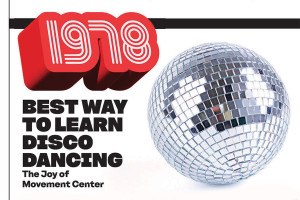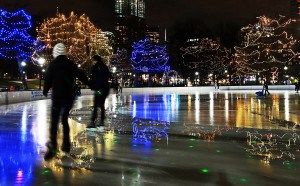BCA Welcomes New Hope Tree Sculpture by Chanel Thervil
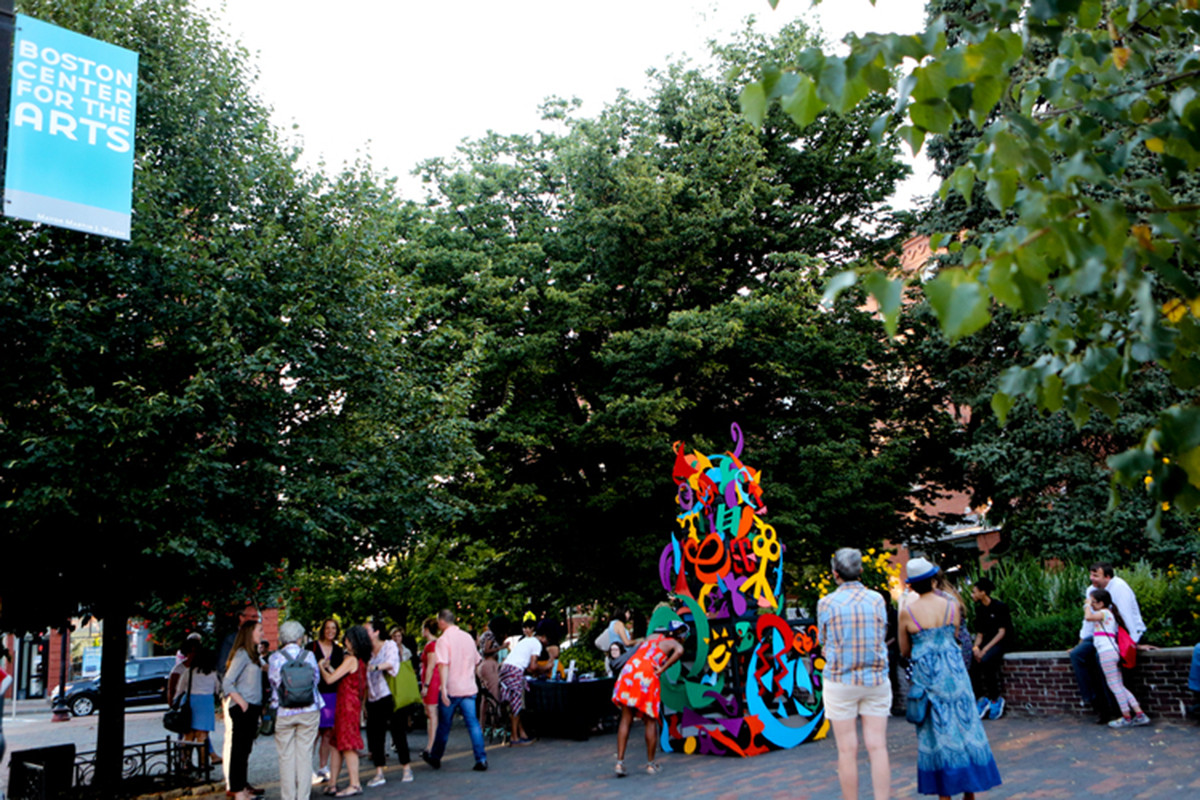
Photograph by Melissa Blackall on chanelthervil.com/emergenceblog
Orlando, Baton Rouge, Minnesota, Dallas, France, Turkey, Baton Rouge again… Recently, any glance at the news seems to bring another tragedy. For those needing some hope, a new piece of public art seeks to uplift.
On Thursday, the plaza outside the Boston Center for the Arts will welcome a new sculpture that will be on view through October 16. Public artist resident Chanel Thervil has been carefully crafting this community hope tree for months, informed both by her personal creativity and local perspectives. To ensure that the piece reflects the emotions of the community as a whole, Thervil took to the streets and asked interested passersby, “What does hope look like to you?” She then worked with them to create a symbol that reflected their conception of hope. These symbols will make up the leaves and branches of the tree.
Thervil has always been a doodler, creating quick drawings during class throughout school and even now during conversations with friends to retain information. This doodling inspired the basis of the project. “What would happen if the drawings I made were the product of an exchange I had with someone?” Thervil wondered.
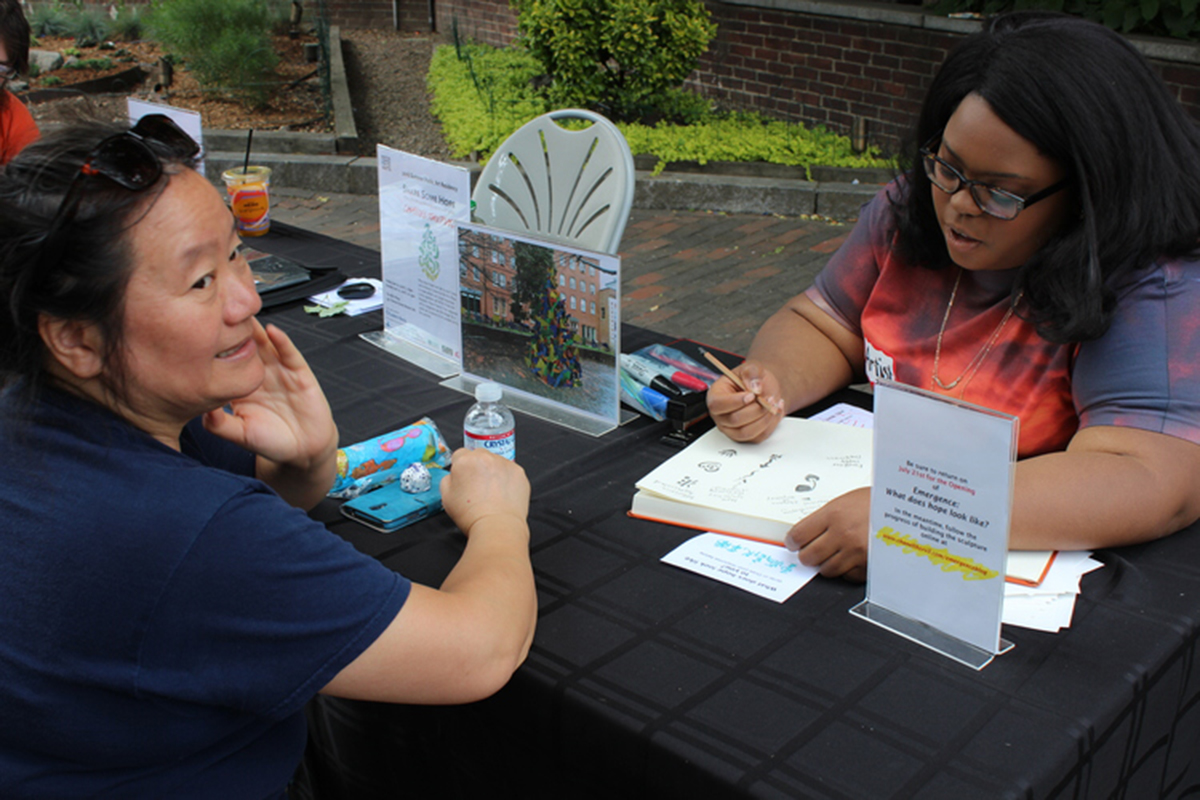
Courtesy of the artist
What happened next turned out to be a lot more than Thervil expected. “This project in particular was strangely meant to be. The first day I did the survey was following a shooting at Jeremiah Burke High School, which is in the very close vicinity of the BCA, and the second community survey I did happened on the morning of the Orlando shooting. It was a perfect or horrifying coincidence that I was doing the type of project that spoke to hope when there were all of these tragic things within the neighboring community and also on a national level.”
At the first meeting, Thervil heard from educators at Jeremiah Burke High School who shared concerns about the students and wanted to support the other staff members. After the Orlando shooting, nearly everyone who visited her table seemed to carry the weight. Thervil’s goal of uplifting the community was tested in a way that no one could have expected.
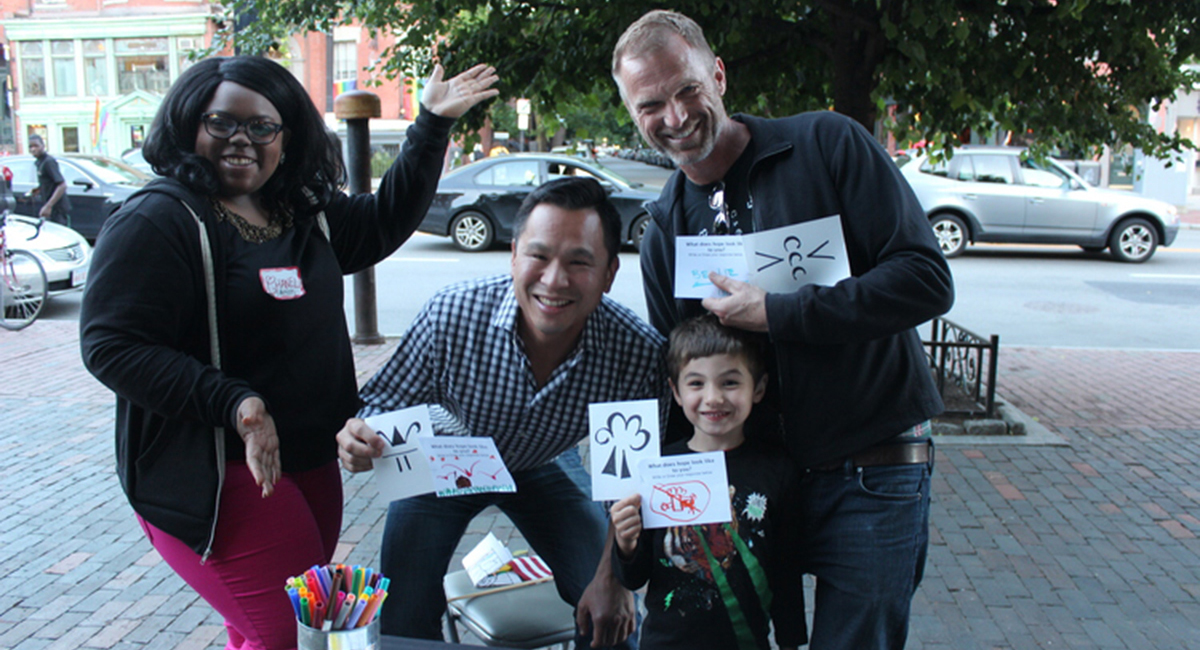
Courtesy of the artist
But amidst the tragedy, community members did find hope. “This project was about getting people to stop and acknowledge the little things that add up to what hope is. It’s not about necessarily having a definite answer, a definite tangible thing that equates to hope. It’s more so about collecting the perspectives of different people and seeing the tiny different pieces that make up the whole.”
So what makes up that whole? “A lot of people viewed hope as connected to nature in organic forms. There were lots of thoughts about sunsets, lots of thoughts about water, the sky,” Thervil says. “Kids just thought of a general aura of positivity and happiness.”
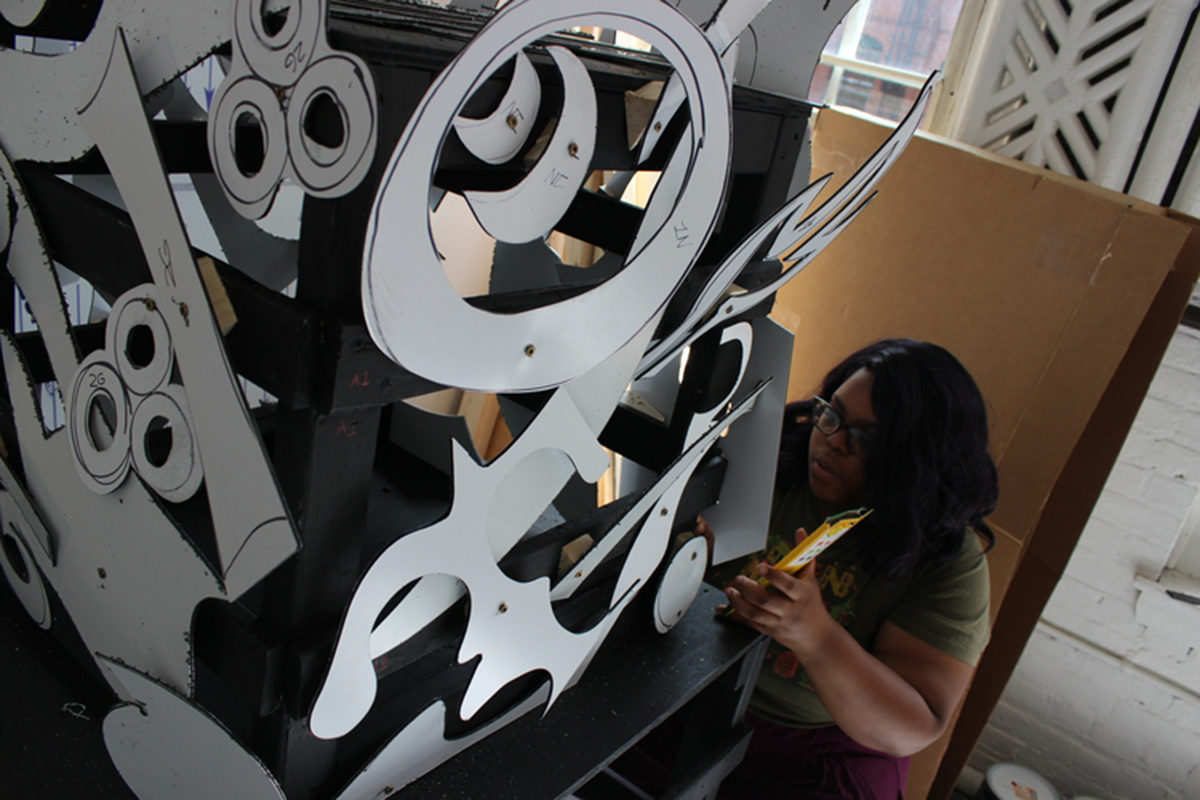
Courtesy of the artist
Thervil shared that everyone who stopped by her table thought deeply about the question and shared their thoughts. “I have been surprised to find the willingness that people have to engage in these types of conversations. In academia there’s this perception that the average person doesn’t want to engage in philosophical conversations or just doesn’t have an interest,” Thervil says. “The biggest frustration that I have is that things become barriers because of the language that we use. If we were transparent about what it is we were trying to do and thought about ways to make our language more accessible for everyone so that everyone could participate—that would be all that it takes.”
She adds that hope is the perfect topic for a public conversation like this. “Hope or the lack of it is something that anyone can be an authority on, because of their own lived experiences,” Thervil says. “I was interested in how I could expand that sentiment to community members, giving them a sounding board where they could put their hopes or positive thoughts for the future out into the universe.”
With the news as violent as it has been recently, more positivity is certainly welcome. And the conversation doesn’t end here. “Public art as a whole is a great catalyst for more creativity—or just more thought,” Thervil says. As they always say, it’s about the journey, not the destination—although when the destination happens to be a piece of public art this beautiful and uplifting, you won’t see anyone complaining.
